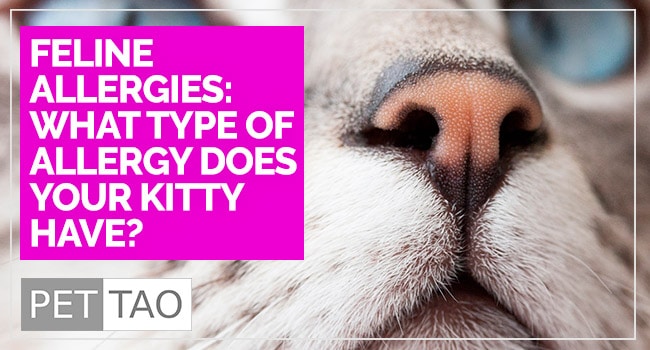First and foremost, the absolute best strategy to employ for your cat with allergies is decreasing his exposure to allergens.
The next step is to address the symptoms caused by allergies.
You can decrease allergen exposure and subsequent symptoms by:
- Using flea prevention
- Avoiding common allergens
- Making dietary changes
Use Flea Prevention Every Month
Fleas are one of the most common causes of allergic reactions in cats. A good flea control product can eliminate many skin allergies!
Avoid Common Allergens
Common indoor allergens include dust mites, mold, and cigarette smoke, and cleaning chemicals.
A good way to avoid allergens is to:
- Utilize air filters
- Vacuum often
- Dust often
Wash your cat’s bedding in hot water every week.
Common outdoor allergens antagonizing cats are fleas, mites, pollen, grass, and mold.
Reduce allergens by rinsing your cat’s feet after coming inside and keeping your cat indoors when the allergen count is high, especially during the spring and fall.
Treat an allergic cat much the same way you would treat an allergic child.
Many cats are allergic to plastic. Use glass, ceramic and stainless steel bowls instead of plastic bowls.
Remember, the best allergy treatment is allergen avoidance!
Dietary Changes
Many cat allergies trace back to a food allergy.
You can try:
- Switching foods (good)
- Try a limited ingredient diet (better)
- Test for food allergies (best)
However, if you decide a food switch is in order, allow four weeks for improvement.
Don’t expect immediate improvement from a dietary change.
And, the results will take time.
However, you CAN successfully manage your cat’s allergies.
More Powerful Tools for Overcoming Cat Allergy Challenges
There are many quick and easy changes you can make at home to help your give your cat an edge on easing allergy challenges.
- Learn more about cat allergies.
- Switch to a Limited Ingredient Cat Food Recipe. PET | TAO Limited Ingredient Cat Food Recipe is naturally low in foods that stimulate an allergic response.
- Supplement with medicinal mushrooms. PET | TAO Complement Immune Mushroom Blend eases inflammatory response and eases allergy symptoms.
- Try digestive enzymes and probiotics. PET | TAO Harmonize Gi boosts gut health and combats food allergens.
- Feed Freeze Dried Lung Treats. According to TCVM, Lung is on the same meridian as the skin. Therefore, lung treats help both breathing and skin allergies. Lung treats support lung and skin similar to a glandular supplement in a “like treats like” fashion.
- Learn more about TCVM Herbal Remedies. Chinese medicine offers many amazing natural solutions for cat allergies Some good examples are:








